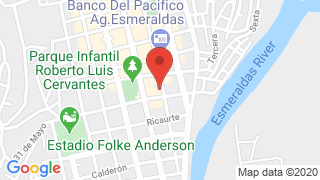Five intangible heritage of the “Country of the Four Worlds” Ecuador



Ecuador is a diverse destination that express in its traditions and practices an inheritance for keeping alive the memory, practices, rituals, knowledge and more knowledge of its ancestors.
The intangible cultural heritage of the country reflects and promotes respect for the communities that vivify the practices and techniques inherited from generation to generation and shows us the value of the expressions of a country like Ecuador.
Meet 5 intangible cultural heritage of the " Country of the Four Worlds":
Woven with history and tradition
-
The traditional toquilla straw hat, also known worldwide as " Panama Hat ", was declared by UNESCO, on December 5, 2012, as Intangible Cultural Heritage of Humanity . The finest hats are made manually by skilled craftsmen from the provinces of Manabí , Azuay and Cañar . Its preparation is an art, which is transmitted from generation to generation in new artisans; and those who wear it make it part of their daily clothing.
The music of the “Black Pearls”
-
In tunes of the hype, marimba, cununos, maracas and songs, the music of the marimba becomes one of the cultural manifestations of the Afro-Ecuadorian people of Esmeraldas . The composition of his lyrics reflects the identity of his people and conveys feelings that evoke saints and turn death into a cosmic journey. The Unesco on December 2nd 2015, declared intangible heritage of humanity to the marimba and traditional songs and dances of the Colombian region of the South Pacific and the Ecuadorian province of Esmeraldas.
Pasillo, music of soul
-
Since December 2018, the Pasillo as a musical genre, is part of the Intangible National Cultural Heritage of the country. The requinto chords recall the voices that identify a very Ecuadorian tradition. On October 1, National Pasillo’s Day is celebrated, reminiscent of the greatest exponent of this music, Julio Jaramillo. The sounds of guitar, violin, piano and other instruments give melody to old poems enriching the Ecuadorian musical memory which is heard until nowadays.
Fabrics with Andean symbols
-
The artisans of Gualaceo, in Azuay , make beautiful garments with unique fabrics that highlight Andean beauty. The population of this area is known for the fabrics worked by men and women, who make the macanas, waist looms, handkerchiefs and other loom-made garments. The vertical and horizontal shapes woven in the garments are a pre-Hispanic heritage. It is part of the cultural heritage of the country since 2015.
Barter an ancestral activity
-
The practice of bartering in the Pimampiro canton, in the province of Imbabura, is considered part of the Intangible Cultural Heritage of Ecuador. This ancestral practice allowed the exchange of products, knowledge and traditional customs. The town located to the north of the country, congregates hundreds of people on Friday and Saturday prior to "Palm Sunday"; people make the exchange with their peers and share an ancient heritage. It is part of the list of assets since 2018.

Publicado en:
Publicado por:



